Common Loons spend the winter along the Pacific Coast. In spring they arrive at interior lakes to breed. Upon arrival they are at once friendly to partners, and highly aggressive to rivals.
The problem loons seem to have is: Which is which? To human eyes, both sexes look alike, and if last week’s observations are a guide, the loons, themselves, often seem unsure of who’s who.
This is a tale of three or four Common Loons coursing about on one of the lakelets of the West Arm of Kootenay Lake.
These two Common Loons had been swimming together for a while, and one occasionally displayed for the other. They seemed to be friends.
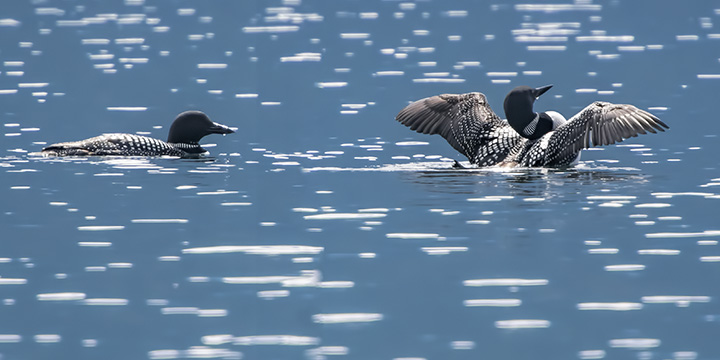
Farther out on the water, a lone loon had been swimming when another spotted it and landed nearby. They approached gingerly, apparently unsure of the identity of the other.
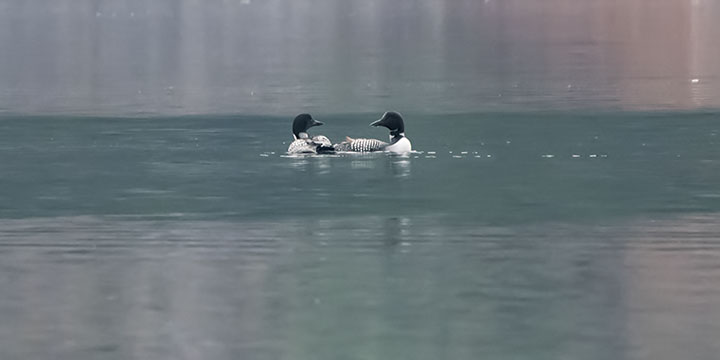
Abruptly the decision was made: foe. How each determined this was unclear to me.
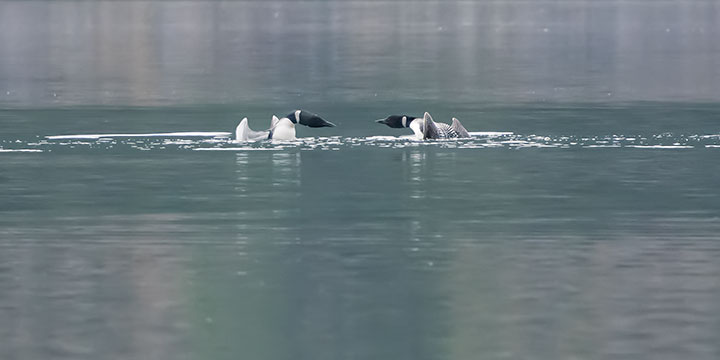
Each backed away and reared up aggressively.
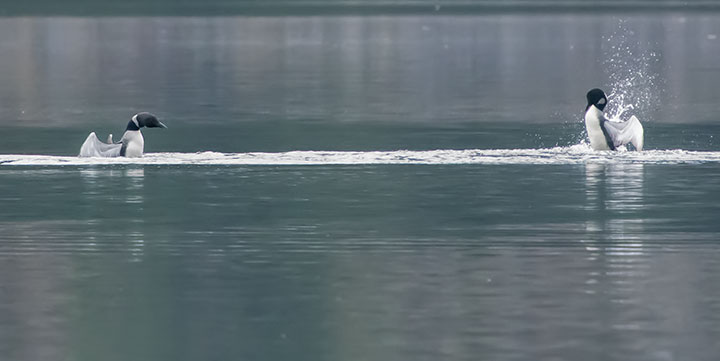
Each thought it could win, so the fight for supremacy began.
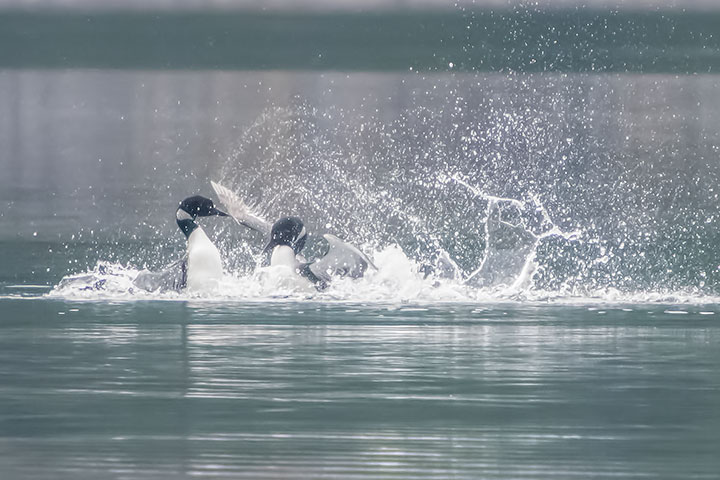
And continued.
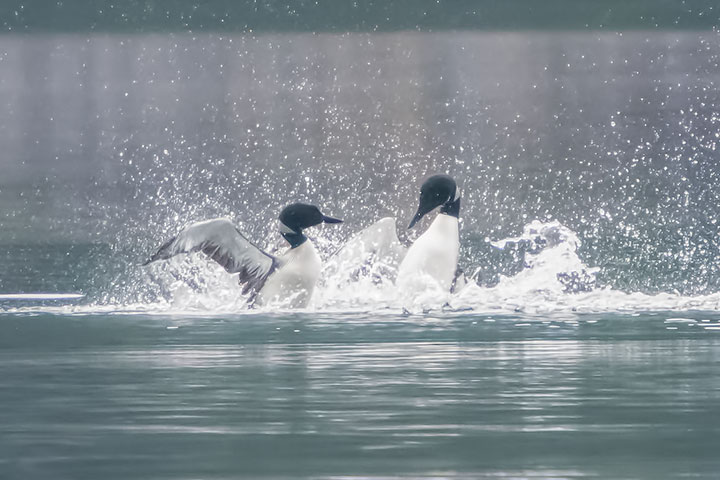
One loon was losing and broke away.
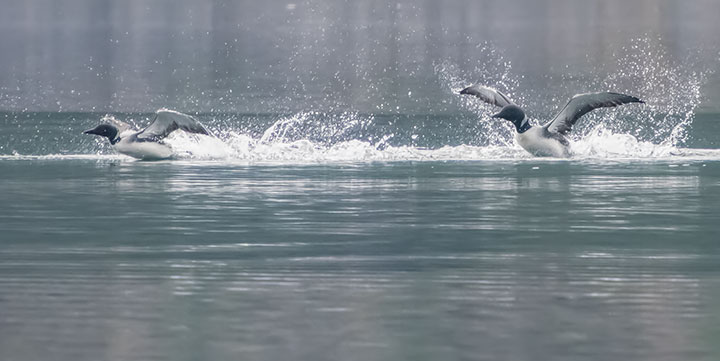
The victor would not leave well enough alone and chased the loser back and forth across the water for another five minutes or so. Each bird planed. There was a great deal of energy put into the exercise before the vanquished loon ended it by flying off.
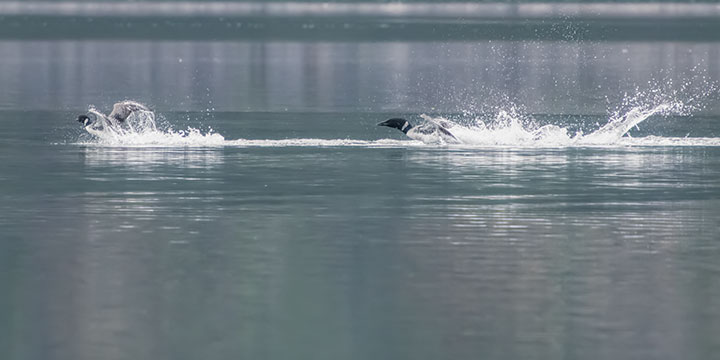
Elsewhere on the lakelet, these two were seen. I rather suspect that they were friends.
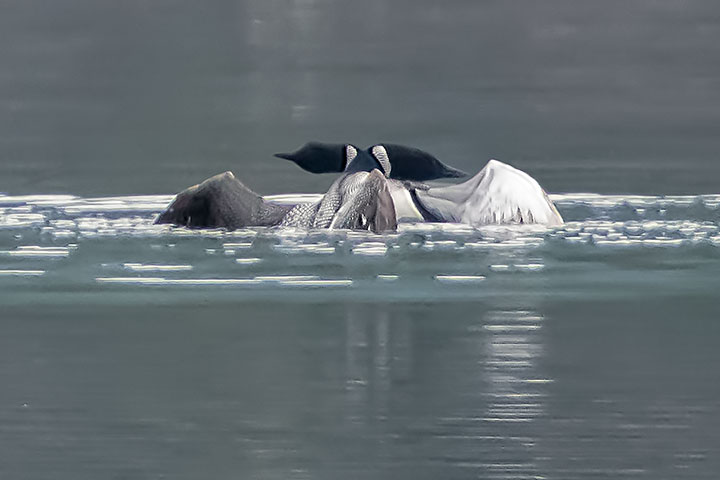

one of your best behavioral sequences or is it hot town?
fascinating! I wonder how the dance of the loons comes into this?
Terrific photo sequence…will we ever know if they were playing or…?!
I always wondered about this planing/paddling/flapping method of surface propulsion (i call it scudding) , it doesn’t seem to make any sense. In April I watched a scuffle similar to the one you have documented, but at the end, the losing loon scudded from the little marina east of the park to the main channel almost all the way across in one long scud at least a kilometer long. I don’t get it.
Max, scudding is a good description. Scud just means to move fast because (or, as if) driven by the wind.
The term, planing, is the same term used for planing boats, airplanes, and hydroplaning. It implies moving fast as a result of hydrodynamic lift. The object that is planing has a different means of support than does something floating as a result of buoyancy. Read my essay on the behaviour at Planing waterbirds.
This certainly enlightens me as to how they do it. It leaves me wondering why. It seems that swimming underwater and flying are both faster and less strenuous methods of getting around for a loon, so I assume they have a compelling reason to plane/scud around like this. I can find nothing in any life histories that mention what this behavior means. Maybe loons are just as silly as humans. Let us know if you figure it out.